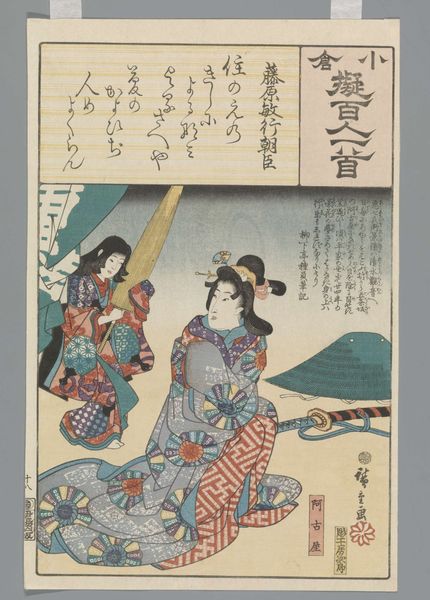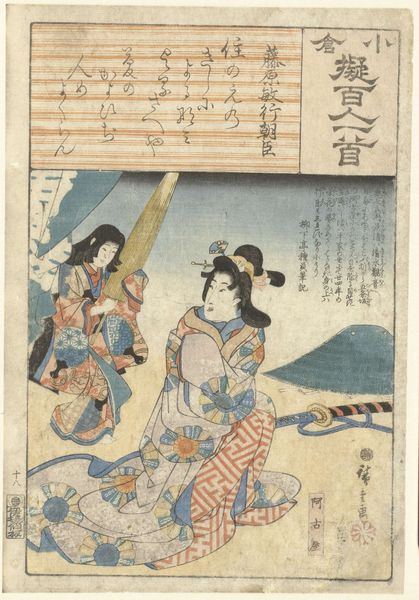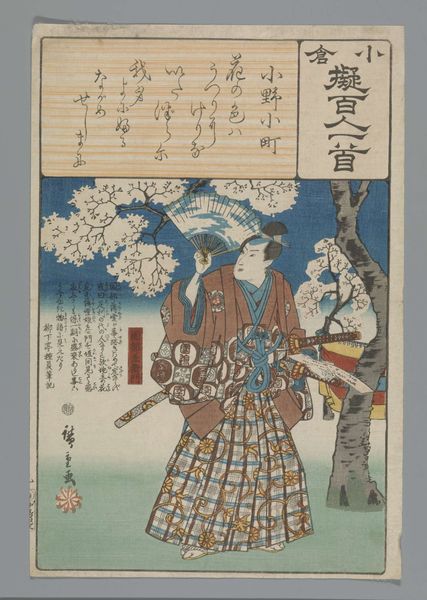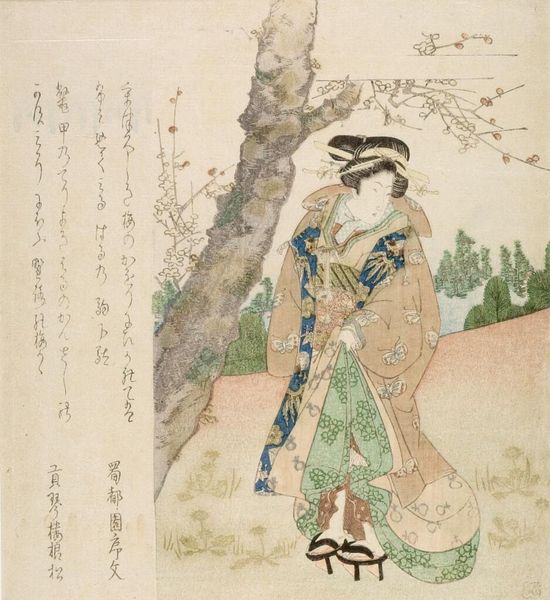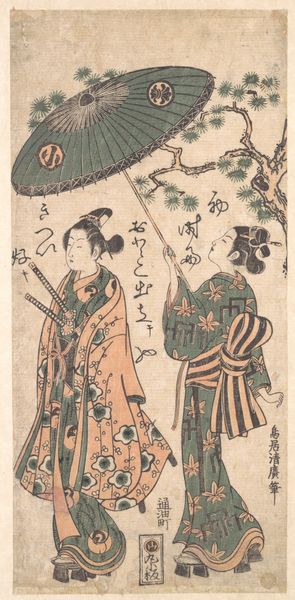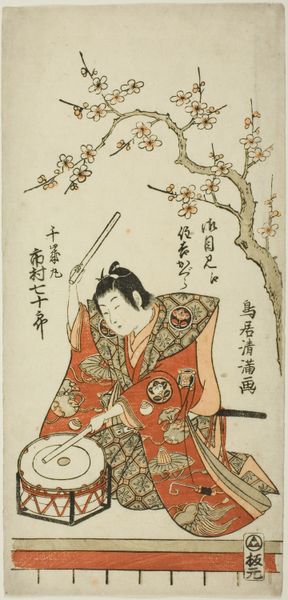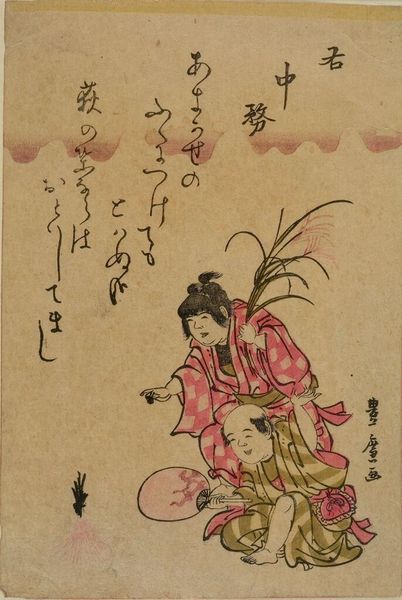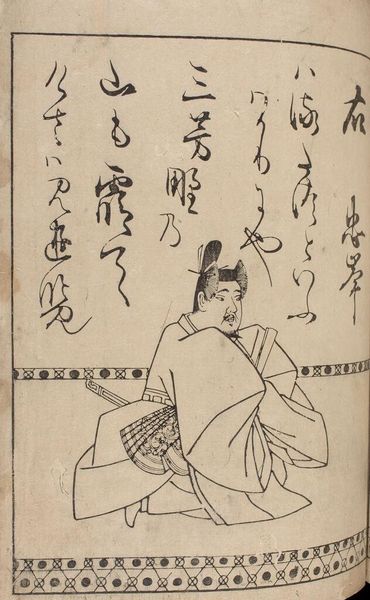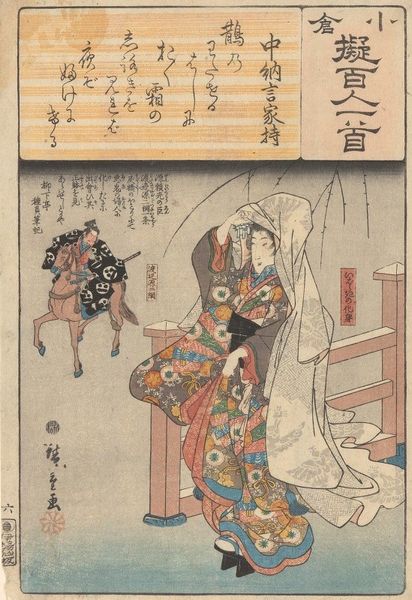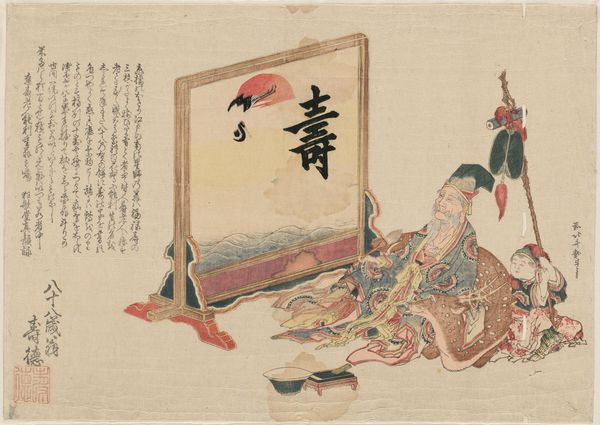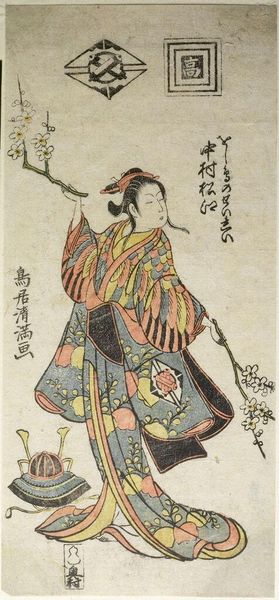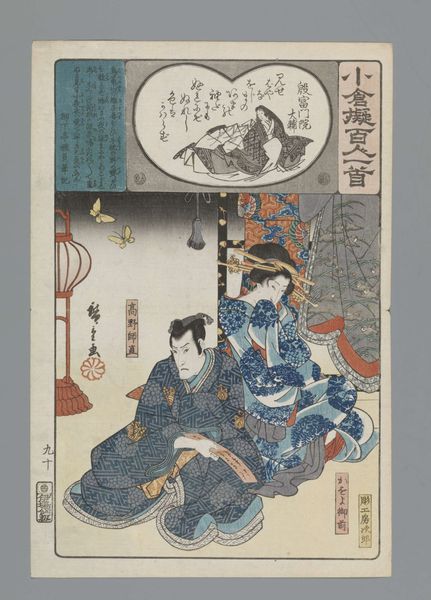
Album of Ninety-eight Prints from the series Ogura Imitations of One Hundred Poems by One Hundred Poets (Ogura nazorae hyakunin isshu) 1800 - 1865
0:00
0:00
#
portrait
#
ink painting
# print
#
asian-art
#
ukiyo-e
#
house
#
japan
#
figuration
Dimensions: 14 1/2 × 9 1/2 × 1 3/4 in. (36.8 × 24.1 × 4.4 cm)
Copyright: Public Domain
Curator: Here we have a page from Utagawa Kuniyoshi's series, "Album of Ninety-eight Prints from the series Ogura Imitations of One Hundred Poems by One Hundred Poets," dating roughly from 1800 to 1865. Editor: What strikes me first is the incredible detail in the patterning of the figure's robe. The whole thing feels meticulously crafted. Curator: Indeed. Kuniyoshi was working within the ukiyo-e tradition, but he was known for pushing boundaries. Here, he's combining portraiture with a deep dive into classical Japanese poetry. Each print in the series illustrates a different poem from the "Hyakunin Isshu" anthology. This one, attributed to Emperor Tenji, reflects on the simple life of a rice field dwelling. Editor: Look at the way the lines of the print create texture! From the layering of the robes to the foliage behind the figure and also at the level of the small house in the distance... We can easily consider it to be an amazing print with fine craftsmanship and laborious processes, which are hallmarks of ukiyo-e prints Curator: It's fascinating how he weaves together these seemingly disparate elements: the portrait, the landscape hinting at agricultural life, and the calligraphic inscriptions referencing the poem. Ukiyo-e wasn't simply about pretty pictures; it was deeply embedded in the social and literary culture of its time. Prints were disseminated and accessible in a broader cultural sense, right? Editor: Exactly! These prints served not only as a visually engaging format but, crucially, were designed to democratize high culture. A means of circulating literacy and artistic trends among the burgeoning merchant class. I also observe how the production of color played such a key role! Curator: Certainly, Kuniyoshi really managed to integrate so much information here into what seems, on first glance, simply as one standing individual within a landscape. This synthesis of history and culture serves as an emblem of ukiyo-e’s purpose. Editor: It pushes me to consider art's broader role as both social mirror and educational platform, reflecting production methodologies, available techniques, and the artist’s intent. Curator: It shows just how multi-faceted Japanese printmaking could be as an integral piece within 19th-century culture. Editor: I come away impressed by Kuniyoshi's blending art, labor, and culture through printing, revealing production itself as both meaningful and visually impressive.
Comments
No comments
Be the first to comment and join the conversation on the ultimate creative platform.
